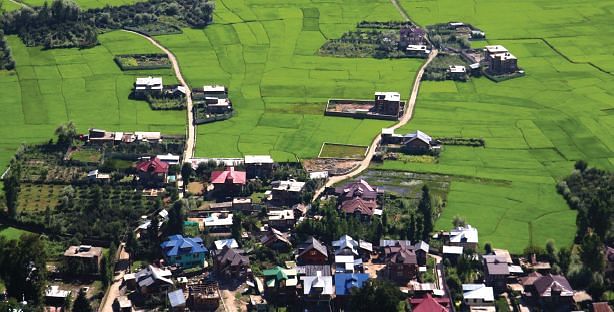Srinagar: Kashmir’s lush green paddy fields, which were visually appealing and provided food for the people, are rapidly disappearing and being replaced by concrete constructions.
Over 5.5 lakh kanal of paddy fields have been converted in just 10 years, largely for non-farm use.
These posh pastures are now home to colonies with massive structures on their chests.
As per the data accessed by Greater Kashmir, in 2012, roughly 1,62,309 hectares of land were under paddy cultivation, which in 2022 has shrunk to 28,242 hectares (5.5 lakh kanal).
Currently, the total land under paddy cultivation now is 1,34,067 hectares.
The conversion of farmland to non-farm purposes is not restricted to the Kashmir region but the Jammu region too.
With housing colonies and commercial complexes sprouting on agricultural land, experts fear that there would be little land left for agriculture in Kashmir shortly.
The official data also points to the fact that agricultural land in Kashmir is shrinking.
According to the data, Kashmir had 4,67,700 hectares of agricultural land in 2015 which has shrunk to 3,89,000 hectares in 2019.
According to the Union Agriculture Ministry’s census data, the average holding size has dropped from 0.62 hectares per person to 0.59 hectares between 2011 and 2016.
A senior agriculture department official said, “The Revenue Department can provide an exact figure for the conversion of agricultural land to nonfarm activity.
However, the conversion of agricultural lands is occurring throughout Kashmir, which is a source of concern not just for the government but also for communities. We can build residences everywhere, even in the highlands, but agricultural land is scarce.”
Previously, the Economic Survey report stated that the unabated conversion of agricultural land in Jammu and Kashmir for non-agriculture activities was causing 60 percent of the J&K’s people to become poorer by the day.
“This sector ironically supports more than 60 percent of employment and effects can be easily seen in the disparity ratio between the average income of agriculturists and non-agriculturists, which has been increasing for long,” the report reads.
“This means that a major population (60 percent) of J&K is becoming poorer. Also, keeping in consideration the scope of expansion in the manufacturing sector and service sector (primarily with the tourism industry under its kitty) the major bottleneck that can hold us back is the Agriculture sector.”







